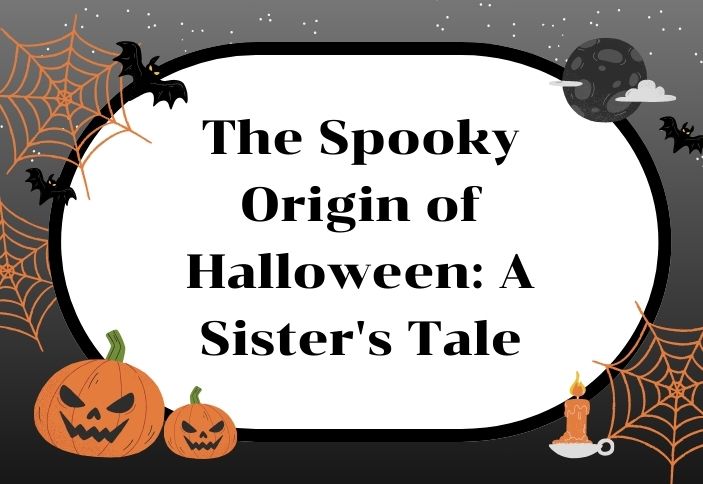Once upon a crisp October evening, as the sun dipped below the horizon, casting eerie shadows across the room, I found myself lounging on the couch while my younger sister, Emma, was engrossed in her Instagram feed. Her eyes were glued to the screen, fingers scrolling through a sea of Halloween costume ideas, party invitations, and pumpkin-carving masterpieces but she doesn’t know anything about origin of halloween.
“Hey, Emma,” I called out, curious about her newfound obsession. “I’ve heard you talking about Halloween for the past two days. Do you even know what Halloween is all about, other than dressing up in cool costumes and attending parties?”
She looked up from her phone, her eyes gleaming with excitement. “Of course, I do! Halloween is all about spooky fun, costumes, and parties, right?”
I chuckled at her enthusiasm. “Well, yes, that’s part of it, but there’s a rich history and meaning behind Halloween that you might find fascinating. It’s not just about candy and costumes. Would you like to hear the real story of Halloween?”
Emma nodded eagerly, setting her phone aside. I began to weave the tale of Halloween’s origins.
Centuries ago, Halloween, originally known as “All Hallows’ Eve,” marked the night before All Saints’ Day, which was a Christian holiday to honor the saints and martyrs. But Halloween has much older roots, dating back to the ancient Celtic festival of Samhain.
The Celts, who lived in what is now Ireland, the United Kingdom, and France, celebrated Samhain around November 1st, marking the end of the harvest season and the beginning of winter. They believed that on the night before Samhain, the boundary between the living and the dead was blurred, allowing spirits and otherworldly creatures to roam freely. To protect themselves from these malevolent beings, the Celts would light bonfires and wear costumes made of animal heads and skins. They also left food and treats outside their homes as offerings to appease these spirits.
As Christianity spread, the Church incorporated some of these traditions into their own celebrations, creating All Hallows’ Eve. Over time, the holiday evolved into Halloween, with a mix of Celtic and Christian influences.
Today, Halloween retains some of these ancient customs. People dress up in costumes as a way to disguise themselves from the wandering spirits, and the tradition of leaving treats out for children as they go door-to-door is a modern twist on the Celtic offerings.
Emma listened intently, her eyes wide with wonder. “So, Halloween is about remembering the dead and warding off spirits from another world?”
“Yes,” I replied. “It’s a time to celebrate the changing seasons, honor those who have passed away, and embrace the spooky and supernatural.”
With newfound knowledge, Emma’s fascination with Halloween deepened. She began to see the holiday in a different light, not just as a night of frivolous fun, but as a time to connect with traditions that have endured for centuries.
As Halloween drew nearer, Emma decided to create her costume with a unique twist, one that paid homage to the ancient Celtic traditions. She also expressed a desire to visit a local cemetery to pay her respects to the departed. Our family embraced her newfound understanding of Halloween, turning it into an opportunity to remember loved ones and learn from history.
As we embarked on our Halloween adventure, I couldn’t help but smile at the transformation in my sister. What started as a simple scroll through Instagram had turned into a deep appreciation for the rich tapestry of traditions and history that make Halloween a truly unique and special holiday.
And so, on that Halloween night, we celebrated not just with candy and costumes, but also with a sense of wonder, gratitude, and connection to the past. As the wind rustled through the leaves and the moon hung high in the sky, we knew that Halloween was about so much more than meets the eye – it was a time to bridge the gap between the living and the dead and to honor the enduring spirit of this ancient celebration.

